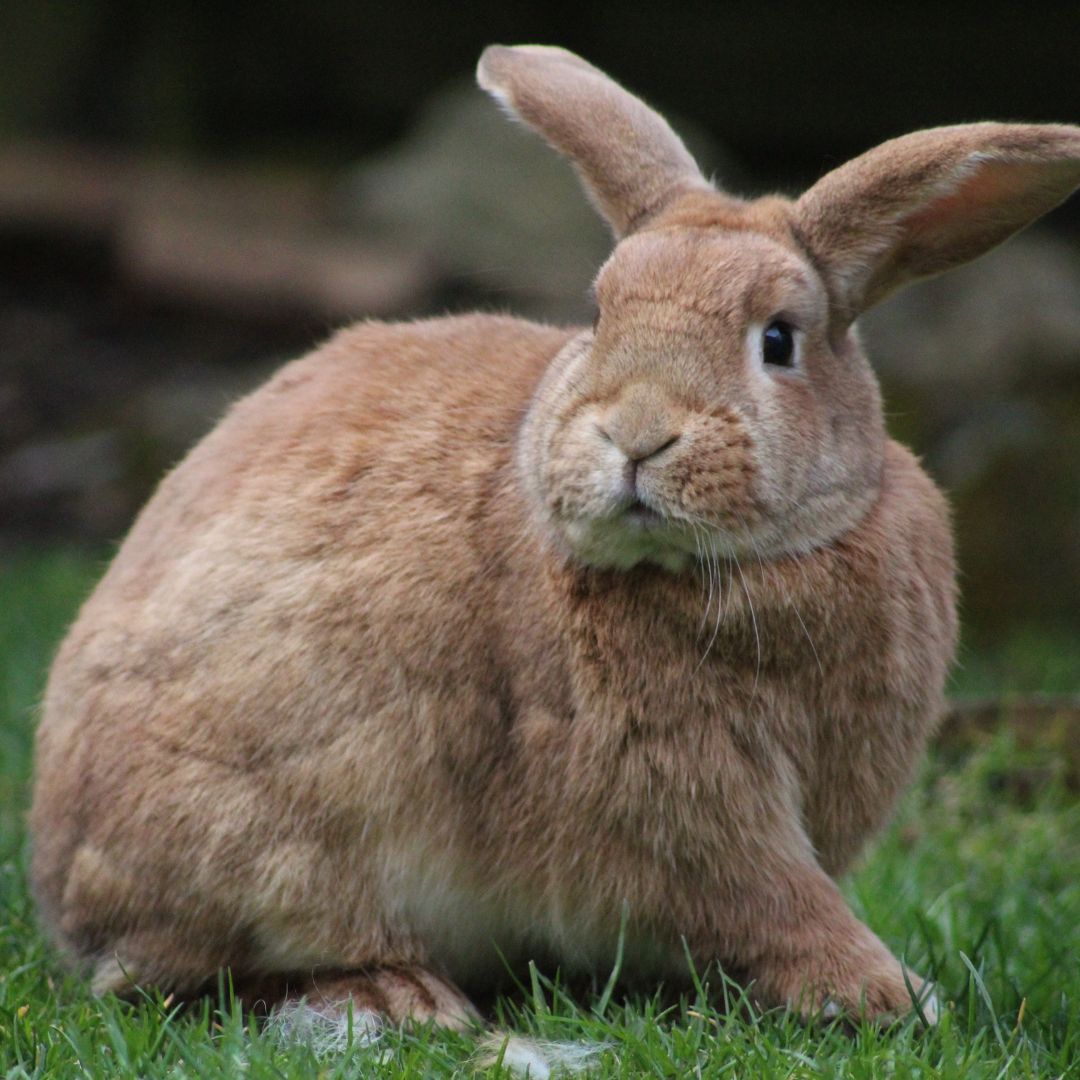What to Look for When Pregnant Rabbits Show Symptoms
Given how frequently they reproduce, female rabbits becoming pregnant are common. You can provide your pet the finest care by being aware of the rabbit pregnancy symptoms.
An alteration in the abdomen's size and shape is the earliest indication of pregnancy in rabbits. The abdomen will grow bigger and rounder as the pregnancy goes on. The size and colour of the nipples may also change, maybe becoming pinker.
A decrease in activity is another indicator of pregnancy in rabbits. The rabbit will grow less active and sometimes even lethargic as the pregnancy goes on. This is typical and shouldn't raise any red flags.
A change in appetite is the third indication of pregnancy in rabbits. The rabbit will eat more as the pregnancy goes on, and she might even start being particular about what she eats. This is likewise typical and shouldn't raise any red flags.
A change in behaviour is the final indication of pregnancy in rabbits. The rabbit may grow more hostile or territorial as the pregnancy goes on. This is likewise typical and shouldn't raise any red flags.
It's crucial to take your rabbit to the vet for a checkup if you think she could be pregnant. Your pet's veterinarian can confirm the pregnancy and offer guidance on how to care for her during that time.
The Things You Need to Know About Preparing for a Rabbit Birth
The process of getting ready for a rabbit birth can be thrilling and fulfilling. To ensure a good delivery, it is crucial to be informed of the appropriate procedures. An overview of the information you need to know to get ready for a rabbit birth will be given in this post.
First, it's critical to comprehend how long a rabbit gestates. The normal gestation time for rabbits is 28–31 days. Watch the doe carefully during this period for any indications of labour. These symptoms could include lack of appetite, nesting behaviour, and restlessness.
Second, it's crucial to give the doe a secure and relaxing place to give birth. Place the doe in a calm, warm, and draft-free location. There should be no potential predators in the region.
Third, it's crucial to have the tools and materials accessible. One or more of these items might be a nesting box, towels, and a thermometer. In case of difficulties, it's also critical to have a veterinarian on call.
Fourth, it's critical to comprehend how babies are born. A litter of four to eight kits will normally be born during the doe's labour. The kits will be born in a sac, which must be opened in order to dry them off. After cleaning the kits, the doe will start nursing them.
Finally, it's critical to comprehend the after-delivery care that the doe and kits will require. Check for any indications of disease or infection on the doe. Check the kits often for any symptoms of illness or dehydration. It's crucial to give the doe and kits a balanced food and an abundance of clean water.
These procedures can help you have a successful rabbit delivery. You can take pleasure in the experience of watching a litter of kits develop and flourish with the right planning and care.
How to Know If Your Rabbit Is About to Have a Baby
Understanding the warning signals that your rabbit is about to give birth can help you give your pet the best care possible.
She will start to create a nest as the first indication that your rabbit is about to give birth. Typically, to accomplish this, fur from her chest and abdomen is removed and used to line the nest. She might also start eating less and gaining greater sluggishness.
Your rabbit's nipples will also grow and turn pink, which is another indication that she is about to give birth. Her body is prepared for breastfeeding by doing this.
Her abdomen will enlarge and become more rounded, which is the third indication that your rabbit is about to give birth. The development of the foetuses inside her is the cause of this.
Finally, your rabbit might start acting more aggressively and aggressively. This is an indication that she is making an effort to safeguard her nest and her unborn young.
In order to provide your rabbit the best care during this time, it is critical that you are aware of these symptoms. It is best to ask your veterinarian for advice if you have any worries.
What to Expect as You Understand the Rabbit Birthing Process
Considering how frequently they reproduce, rabbits, giving birth can be both thrilling and overwhelming. You may get ready for the arrival of your new litter by being aware of what to anticipate.
For rabbits, the gestation period lasts approximately 28 to 31 days. The doe should be housed in a calm, cosy setting with lots of new hay and water at this time. To make sure she is getting the right nourishment for herself and her growing litter, she should also be fed a high-quality diet.
The doe will start constructing a nest in her cage when the time is right to give birth. Typically, hay, fur, and other materials are used for this. She might also become more agitated and talkative.
The doe will start to push and strain when she is in labour. It's best not to disrupt this because it's natural. The doe will then give birth to one to eight kits at a time in a litter. The doe will rip open the birth sac that the kits are in and eat it. This is typical and aids the doe in stimulating the kits' respiration and cleaning them.
The doe will start grooming and caring for the kits as soon as they are born. To feed them, she will also produce milk. Since this is when the kits will start to open their eyes and become more active, they should be left with the doe for at least two weeks.
During this period, it's crucial to keep the doe and her young in a calm, cosy setting. Along with a superior diet, the doe should also have lots of fresh hay and water.
You can be more ready for the coming of your new litter if you comprehend how a rabbit gives birth. Your doe and her kits will be healthy and content if you give them the right care and food.

Advice for Supporting Your Rabbit During Delivery
1. Ensure that your rabbit has a secure, peaceful, and convenient birthing location. Distractions and noise should not be present in this area.
2. Make sure your rabbit has access to a lot of fresh hay and water. This will keep her hydrated and provide her the nutrition she needs when she goes into labour.
3. Keep a watchful eye on your rabbit throughout labour. Look out for indications of distress as panting, agitation, or loud vocalisation.
4. If your rabbit is having trouble giving birth to her young, call your veterinarian right away.
5. After the kits are delivered, look for life signs like movement or vocalisation. In the event that any of the kits seem to be stillborn, call your veterinarian right once.
6. Give your rabbit and her offspring a warm, dry, and clean environment.
7. For the first several days following delivery, keep a watchful eye on your rabbit and her kits. Search for indications of disease or suffering.
8. If your rabbit's milk supply is insufficient to support her young, speak with your veterinarian right once.
9. Provide lots of fresh hay and water for your rabbit. This will keep her hydrated and give her the nutrients she needs to feed her kits.
10. Get in touch with your veterinarian right away if you have any queries or worries regarding the labour and delivery of your rabbit.
